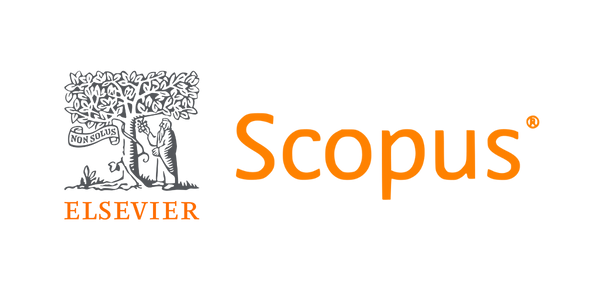The Relationship between Eating Attitudes, Body Image Appreciation and their Impact on Self-Esteem among Youth Community in Muar, Malaysia
DOI:
https://doi.org/10.31674/mjn.2024.v16i01.007Abstract
Introduction: Self-esteem is a major determinant of an individual's body image. Self-esteem issues can lead to inferior body images, which in turn increase the risk of disordered eating. This study will fill a gap in the relationship between eating attitudes, body image appreciation, and their impact on self-esteem among the Muar youth population. Objective: The study aimed to examine the relationship between eating attitudes and body image appreciation and self-esteem among the youth community in Muar. Methods: The study used a cross-sectional study design. A sample of 384 youths aged 18 to 35 years old was selected using a convenience sampling method. An online survey with bilingual questions in Malay and English was distributed for data collection. The study consisted of four sections: demographic data, the Eating Attitudes Test-26 (EAT-26), the Body Appreciation Scale-2 (BAS-2), and the Rosenberg Self-Esteem Scale (RSES). Results: The results indicated that the Muar youth community had good eating attitudes (14.27 ± 12.92), moderately good body self-appreciation (36.70 ± 8.40), and a moderate self-esteem score (17.32 ± 4.40). The regression results proved there was a significant relationship between eating attitudes and body self-appreciation towards self-esteem (p < 0.05), in which oral control and body appreciation were the predictors for self-esteem. Conclusion: The findings contributed to new knowledge regarding the pattern of eating attitudes and body image appreciation, as well as providing an understanding of self-esteem. The relationship showed that the reduction of oral control attitudes and the rise in body image appreciation would have an impact on improving self-esteem.
Keywords:
Body Image Appreciation, Cross-Sectional Study, Eating Attitude(s), Relationship, Self-Esteem, Youth, MuarDownloads
References
Ali, N., Ramnani, V., & Desai, O. P. (2022). To Study the Correlation between Body Image and Self Esteem in Adolescents and Young Adults Aged 18-25 Years of Age. Indian Journal of Physiotherapy & Occupational Therapy, 16(3), 54-60. https://doi.org/10.37506/ijpot.v16i3.18397
Azman, R. I., Nasser, B. F. M., Izlan, I. S., Najib, F. N. M., & Jamal, M. H. H. A. (2022). Prevalence of development of eating disorders among students in University of Cyberjaya. Asian Journal of Medicine and Health Sciences, 5(1), 126. https://www.ajmhsrcmp.org/images/journal/Vol5_Issue1_June22/13_Raziq%20Irfan%20Azman_AJMHS_2022_Vol5_Issue1_OriginalArticle_EatingDisorders_Final.pdf
Barakat, S., McLean, S. A., Bryant, E., Le, A., Marks, P., Touyz, S., & Maguire, S. (2023). Risk factors for eating disorders: findings from a rapid review. Journal of Eating Disorders, 11(1), 8. https://doi.org/10.1186/s40337-022-00717-4
Buchanan, B. (2023). Eating Attitudes Test-26 (EAT-26). NovoPsych. https://novopsych.com.au/assessments/diagnosis/eating-attitudes-test-26-eat-26/, Accessed on 10th May, 2022.
Calderón-Asenjo, R. E., Jalk-Muñoz, M. C., Calizaya-Milla, Y. E., Calizaya-Milla, S. E., Ramos-Vera, C., & Saintila, J. (2022). Association Between Emotional Eating, Sociodemographic Characteristics, Physical Activity, Sleep Duration, and Mental and Physical Health in Young Adults. Journal of Multidisciplinary Healthcare, 15, 2845–2859. https://doi.org/10.2147/JMDH.S391752
Choukas-Bradley, S., Roberts, S. R., Maheux, A. J., & Nesi, J. (2022). The Perfect Storm: A Developmental-Sociocultural Framework for the Role of Social Media in Adolescent Girls' Body Image Concerns and Mental Health. Clinical Child and Family Psychology Review, 25(4), 681–701. https://doi.org/10.1007/s10567-022-00404-5
Chua, S. N., Fitzsimmons‐Craft, E. E., Austin, S. B., Wilfley, D. E., & Taylor, C. B. (2022). Estimated prevalence of eating disorders in Malaysia based on a diagnostic screen. International Journal of Eating Disorders, 55(6), 763-775.https://doi.org/10.1002/eat.23711
De Pasquale, C., Morando, M., Platania, S., Sciacca, F., Hichy, Z., Di Nuovo, S., & Quattropani, M. C. (2022). The Roles of Anxiety and Self-Esteem in the Risk of Eating Disorders and Compulsive Buying Behavior. International Journal of Environmental Research and Public Health, 19(23), 16245. https://doi.org/10.3390/ijerph192316245
Flint, L., & MacQuillan, E. (2019). The Relationship between Neuroticism, Self-Esteem, and Disordered Eating Attitudes: Examining the Health at Every Size Theory. Journal of the Academy of Nutrition and Dietetics, 119(10), A115. https://doi.org/10.1016/j.jand.2019.08.059
García, J. A., y Olmos, F. C., Matheu, M. L., & Carreño, T. P. (2019). Self esteem levels vs global scores on the Rosenberg self-esteem scale. Heliyon, 5(3) e01378. https://doi.org/10.1016/j.heliyon.2019.e01378
Garner, D. M., Olmsted, M. P., Bohr, Y., & Garfinkel, P. E. (1982). The eating attitudes test: psychometric features and clinical correlates. Psychological Medicine, 12(4), 871-878. https://doi.org/10.1017/S0033291700049163
Higgs, S., Bouguettaya, A., & Ruddock, H. (2022). Awareness of Social Influences on Eating Is Dependent on Familiarity with Imagined Dining Partners and Type of Eating Occasion. Frontiers in Psychology, 13, 841422. https://doi.org/10.3389/fpsyg.2022.841422
Kapoor, A., Upadhyay, M. K., & Saini, N. K. (2022). Relationship of eating behavior and self-esteem with body image perception and other factors among female college students at University of Delhi. Journal of Education and Health Promotion, 11(1), 80. https://doi.org/10.4103/jehp.jehp_855_21
Khodabakhsh, S., & Leng, C. S. (2020). Relationship between social media usage and body image evaluation in Malaysian youth. Malaysian Journal of Medical Research (MJMR), 4(4), 62-67. https://doi.org/10.31674/mjmr.2020.v04i04.013
Krauss, S., Dapp, L. C., & Orth, U. (2023). The link between low self-esteem and eating disorders: A meta-analysis of longitudinal studies. Clinical Psychological Science, 11(6), 1141-1158.https://doi.org/10.1177/21677026221144255
Li, S., Chen, X., Liu, L., & Sun, C. (2024). The relationship between social withdrawal and problematic social media use in Chinese college students: a chain mediation of alexithymia and negative body image. BMC Psychology, 12(1), 246.https://doi.org/10.1186/s40359-024-01755-0
Murphy, N. (2023). What is Obesophobia? CPD Online College. https://cpdonline.co.uk/knowledge-base/mental-health/what-is-obesophobia/, Accessed on 15th September 2022.
Nazia, N., Law, J., & Butt, Z. A. (2022). Identifying spatiotemporal patterns of COVID-19 transmissions and the drivers of the patterns in Toronto: A Bayesian hierarchical spatiotemporal modelling. Scientific Reports, 12(1), 9369. https://www.nature.com/articles/s41598-022-13403-x
Pilishvili, T., & Danilova, A. (2019). Self-esteem as a component of subjective well-being of students. Revista Espacios, 40(26), 19. https://www.revistaespacios.com/a19v40n26/a19v40n26p19.pdf .
Pires Portugal, M., & Marcelino Siquara, G. (2022). Use Of Instagram, Body Image Satisfaction And Self Esteem In Young Women // Uso Do Instagram, Satisfação Da Imagem Corporal E Autoestima Em Mulheres Jovens. Revista De Psicologia, 13(2), 213–226. https://doi.org/10.36517/10.36517/revpsiufc.13.2.2022.15
Rosenberg, M. (2015). Society and the Adolescent Self-Image. Princeton university press, United States.
Second Asean Youth Development Index, (2022), the 2nd report. https://asean.org/serial/144771/. Accessed on 25th August, 2022.
Selensky, J. C., & Carels, R. A. (2021). Weight stigma and media: An examination of the effect of advertising campaigns on weight bias, internalized weight bias, self-esteem, body image, and affect. Body Image, 36, 95-106.https://doi.org/10.1016/j.bodyim.2020.10.008
Shchebetenko, S., De-Marchis, G., & Lozhnikova, A. (2022). Is self-esteem increasing during emerging adulthood? A two-wave case from Russia. Personality and Individual Differences, 194, 111657. https://doi.org/10.1016/j.paid.2022.111657
Toselli, S., Zaccagni, L., Rinaldo, N., Mauro, M., Grigoletto, A., Maietta Latessa, P., & Marini, S. (2023). Body Image Perception in High School Students: The Relationship with Gender, Weight Status, and Physical Activity. Children (Basel, Switzerland), 10(1), 137. https://doi.org/10.3390/children10010137
Tylka, T. L., & Wood-Barcalow, N. L. (2015). The Body Appreciation Scale-2: item refinement and psychometric evaluation. Body Image, 12, 53-67. https://doi.org/10.1016/j.bodyim.2014.09.006
Valois, D. D., Davis, C. G., Buchholz, A., Obeid, N., Henderson, K., Flament, M., & Goldfield, G. S. (2019). Effects of weight teasing and gender on body esteem in youth: A longitudinal analysis from the REAL study. Body Image, 29, 65-73. https://doi.org/10.1016/j.bodyim.2019.02.009
Van Eeden, A. E., Van Hoeken, D., & Hoek, H. W. (2021). Incidence, prevalence and mortality of anorexia nervosa and bulimia nervosa. Current Opinion in Psychiatry, 34(6), 515-524. https://doi.org/10.1097/yco.0000000000000739
Viren, S., Tran, U. S., Stieger, S., Ranjbarf, A., Olanrewaju Adebayo, S., Afhami, R., ... & Andrianto, S. (2023). Body appreciation around the world: Measurement invariance of the Body Appreciation Scale-2 (BAS-2) across 65 nations, 40 languages, gender identities, and age. 46, 449-466. https://doi.org/10.1016/j.bodyim.2023.07.010
Xie, Z. (2024). The Influence of Social Media on Perception of Body Image and Beauty Standards on Young People. Transactions on Social Science, Education and Humanities Research, 5, 143-148.https://doi.org/10.62051/67rvhh97
Yang, F., Qi, L., Liu, S., Hu, W., Cao, Q., Liu, Y., ... & Yang, Y. (2022). Body dissatisfaction and disordered eating behaviors: the mediation role of smartphone addiction and depression. Nutrients, 14(6), 1281. https://doi.org/10.3390/nu14061281
Yusoff, N. R., & Shukri, M. (2020). Self – Esteem and Perfectionism as Predictors of Eating Disorders among University Students. Universiti Malaysia Terengganu Journal of Undergraduate Research, 2(4), 115–122. https://doi.org/10.46754/umtjur.v2i4.185
Published
How to Cite
Issue
Section
License
Copyright (c) 2024 The Malaysian Journal of Nursing (MJN)

This work is licensed under a Creative Commons Attribution-NonCommercial-NoDerivatives 4.0 International License.



































